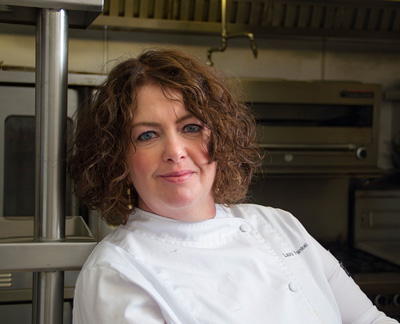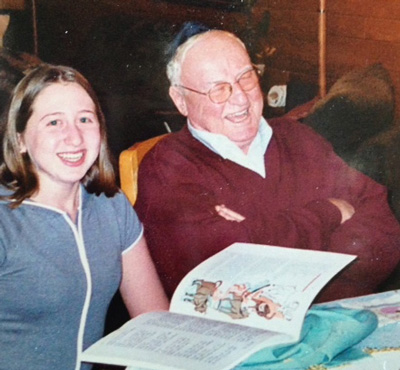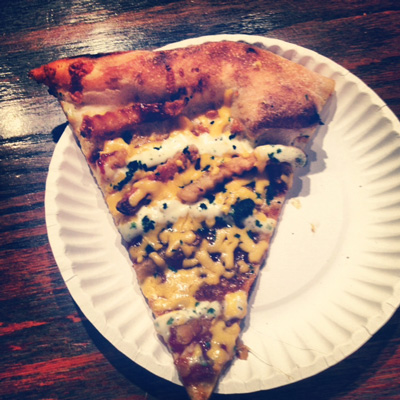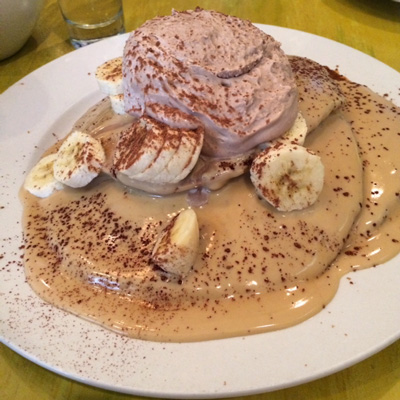
Polar vortexes and
mountains of snow be damned, full speed ahead to spring and the holiday!
We Chicagoans have
been through a lot and we deserve a delicious and full flavored Passover.
My theme for all the
food this year is CLEAN recipes. No hidden ingredients and no faux or ersatz
substitutes. Just pure, scrumptious flavors.
I get depressed when
I see the piles of mixes and boxed Passover foods lining the shelves. I am not
sure what those mixes have to do with Passover, but I know they are not good. I
prefer to eat with whole and
unprocessed ingredients. Passover should be is a feast for the senses that will
nourish mind, body, and soul. I don’t see boxed and nutritionally empty foods
as a part of that sensibility. I want to emerge from “Mitzrayim” (Egypt) and the holiday renewed physically and mentally.
I attended the International Association of Culinary
Professionals and the Women Chefs
and Restaurateurs Association, both hosted in Chicago this year. The
lectures I attended at both events were remarkable similar. The topic of
discussion was regarding the health of the nation and why no one cooks at home?
The only way for our families to get healthy is if we spend more time cooking
at home and eating wholesome homemade meals. I was saddened to hear that the
First Lady of the United States and Private Chef for the First Family both said
the reason people don’t cook at home is not due to time constraints or even
economics; it is due to the simple fact that they don’t know how!
As a chef, it is my
mission to share recipes, techniques, and any tricks I have up my sleeve to get
people in the kitchen and cooking. I think one of the first steps to that end
of cooking at home from fresh whole ingredients, is to skip the box of
chemicals and gunk and go for the fresh and whole foods.
I think the holiday
is a chance to break away from our usual work-day routines and eating habits
and start the season clean and fresh, just like our freshly scrubbed kitchens
and homes. And yet, more than any other time of the year, I see store shelves
and shopping carts full of boxed, prepared foods that bear no resemblance to
real food.
After the winter we
have had, I am cooking up a holiday full of bright, fresh and clean flavors. Here’s
to a holiday of home cooked and fresh meals of Clean Food. Chag Kasher v’ Sameach Pesach!
Standing Rib Roast with Smashed New
Potatoes
Cooking a large piece
of meat to the perfect juiciness starts with bringing the meat to room
temperature before cooking.
The center/eye of the
meat should be at room temperature or it will be undercooked with the outer
layers being overcooked. Your goal is a large medium rare EYE of the meat with
a thin browned layer on the outside.
Take the time to
allow the meat to come to room temperature which should be about 1 hour or so.
I scatter the bottom
of my roasting pan with small onions, baby potatoes, and whole heads of garlic.
I use cipollini onions, which are small and sweet. They cook to a delicious
caramel-gooey texture and make a great schmear for the meat. Divine!
Serves 8-10
6 rosemary sprigs,
leaves stripped and chopped
8 cloves of garlic,
finely chopped
¼ cup kosher salt
2 tablespoons freshly
cracked pepper
1/3 cup extra virgin
olive oil
1 8-81/2-pound
bone-in rib roast
2 cups small onions
(such as pearl onions or cipollini), peeled
2 pounds new potatoes
2 whole heads of
garlic
1. Place the rosemary, garlic, salt, pepper, and olive oil
in a food processor and pulse until the mixture forms a paste
2. Schmear the paste, generously, on the roast and allow
the roast to stand at room temperature for an hour or refrigerate
overnight.
3. Preheat oven to 425 degrees F. Place the meat in a
roasting pan, meat facing up, and roast for 30 minutes. Decrease the oven
temperature to 350 degrees F and cook, occasionally spooning the juices
over the meat, until a thermometer inserted into the thickest part of the
meat registers about 125 degrees F (about 1 ½ hours) for medium rare. (I
go a little under to account for carry over cooking, so I prefer to pull
the meat at 115 degrees F.)
4. Allow the meat to rest for about 15 minutes before
cutting the meat off the bone and slicing.
5. Skim the fat off the pan juices and serve.
6. Squeeze the cooked garlic out of the bulb and mash in a
bowl.
7. Smash the potatoes with the back of a small pan and
toss with the garlic and salt and pepper
8. Place a pan, lightly coated with olive oil, over medium
heat and cook the potatoes until the edges are crispy and browned.
9. Serve the potatoes on a platter with the sliced meat
and top with the browned onions and pan juices.
Roasted Carrots
When spring has
sprung so has one of the simplest and most underrated vegetables, baby carrots.
I am not talking about the carrots that are machine cut and in a bag in the
produce department. I am talking about the carrots that are purchased with
their tops still on and are miniature gorgeous orange, yellow and burgundy
sweet root vegetables loaded with earthy flavor.
These beauties don’t need much fussing. Just a
quick rinse and scrub (I don’t even peel mine) and then a good toss with good EVOO
and some salt and pepper.
Simple is sometimes
the best way of showing off color and flavor.
2 bunches of baby
carrots with tops (carrots with tops are a good indicator of freshness. If the
tops don’t look fresh and vibrant, the carrots are not fresh), tops cut off
with an inch left attached to the carrot for a rustic look
EVOO
Kosher salt and
pepper
Preheat oven to 350
degrees, line a baking sheet with parchment paper.
1. Toss the carrots with olive oil, salt and pepper and
place the lined baking pan. Don’t overcrowd the carrots or they won’t
brown evenly.
2. Roast the
carrots about 15-20 minutes until they are light toasty brown but still
show their gorgeous color. You should be able to pierce the carrot with a
fork and have a little resistance.
3. Toss the carrots with crispy shallots.
Crispy Shallots
Crispy shallots are a
professional chef’s best friend. We use them whenever we need a tasty crunchy
garnish.
The secret to crispy
shallots is to cook over medium low heat and in plenty of oil. Don’t worry, the
oil can be used to sauté in…bonus!
4 large shallots,
peeled and sliced very thinly on a mandolin or with a knife
Extra virgin olive
oil
Kosher salt and
freshly cracked pepper
Line baking sheet
with paper towels
1. Place a 9-10 inch sauté pan over medium-low heat. Add
about ½ inch of oil. Cook the shallots very slowly until they turn golden
brown. Be patient! This could take 15 minutes. Transfer the shallots to
the lined pan and season with salt and pepper.
2. Store the shallots in a container with a tight fitting
lid at room temperature for up to 3 days.
3. Save the tasty oil for sautéing, or drizzling on matzo
in the refrigerator. YUM!
Meyer Lemon Sponge Cake
Sponge cakes are
boring and ho-hum unless you kick them up a bit.
My sponge cake gets
added oomph from Meyer lemons. Meyer lemons are cross between a tangerine and
lemon. The fruit is fragrant and lively with the perfume of tangerine.
I also use vanilla
bean in my cake. The essence from the vanilla bean adds an elegant flavor and
aroma.
I bake my sponge in
individual cake pans and add Meyer lemon curd as a filling between the layers.
The curd is tart and refreshing.
You can also bake the
sponge cake in a bundt style pan and place a dollop of the delicious curd right
on top of the cake.
1 cup matzo cake meal
6 tablespoons potato
starch
½ teaspoon sea salt
7 large eggs,
separated
1 ½ cups granulated
sugar, divided
1 ½ tablespoons
grated Meyer lemon zest
½ cup Meyer lemon
juice
½ Tahitian vanilla
bean, scraped
Preheat oven to 325
degrees.
1. Mix
the flour, potato starch, and salt into a bowl and set it aside. In a large
mixing bowl, beat the egg yolks and 1 cup of the sugar with an electric mixer
on medium-high speed for 5 minutes, scraping down the bowl once. Mixture should
be thick and light. Mix in the lemon zest, juice, and vanilla on low speed
just until blended. Set aside.
2. In
another large mixing bowl, with clean beaters, beat the egg whites on
medium-high speed until the whites are thick and quite foamy. Gradually add the
remaining 1/2 cup of sugar while beating the egg whites on high speed until they
are stiff and glossy, about 7 minutes.
3. Fold
in 1/3 of matzo mixture using a rubber spatula into the beaten egg yolks. Fold
in another third of the flour mixture along with a third of the beaten egg
whites. Then, fold in the remaining flour, then the remaining egg whites, until
the batter is completely mixed in. Pour slowly into 9-inch cake pans and smooth
the top with a spoon.
4. Bake
for 30 to 40 minutes or until a toothpick comes out clean, remove onto a wire
rack and let cool completely. Carefully remove cakes from the pans.
5. Spread
layers with Meyer lemon curd and finish cake with Meyer lemon glaze.
Meyer Lemon Curd
There is nothing
especially Pesadich about this
recipe. It is so delicious you can use it year round.
My Meyer lemon curd
is a clean recipe. I don’t use margarine as a butter substitute, instead I add
rich and delicious olive oil to give the curd extra richness and shine.
The curd is delicious
as a cake filling and as a “dip” for berries and other fruit.
2 teaspoons Meyer
lemon zest
Juice of 4 Meyer
lemons
½ cup granulated
sugar
6 egg yolks
2 tablespoons extra
virgin olive oil
¼ teaspoon sea salt
1. Microplane
lemons to make 2 teaspoons zest.
2. Whisk together zest, juice, sugar, salt, and
eggs in a non-reactive pot. Place over medium-low heat and cook, whisking,
until thickened and smooth, about 5 minutes. Strain curd through a fine sieve
set into another bowl.
3. Add
the olive oil and mix thoroughly. Chill
until ready to add to cake. Cover with plastic before chilling to prevent skin
forming.
Meyer Lemon Glaze
The simple glaze adds
flavor and finishes the cake beautifully. Be sure to use the glaze quickly
before the sugar crystallizes and becomes grainy.
1 cup powdered sugar
2 tablespoons Meyer
lemon juice
Mix vigorously to
combine. Use immediately.
Visit Chef Laura Frankel’s Facebook
page (Chef Laura Frankel) to find out where she is teaching Passover cooking
classes around town.


.jpg)


















.jpg)



